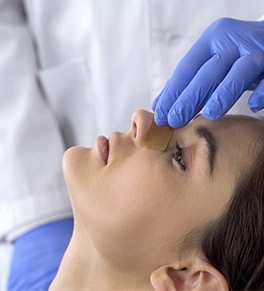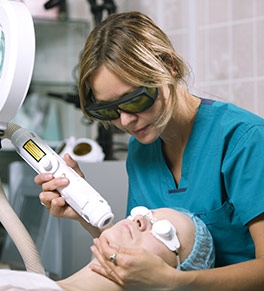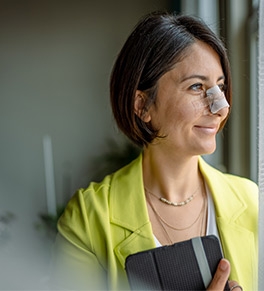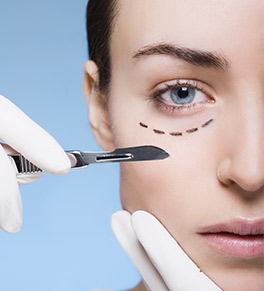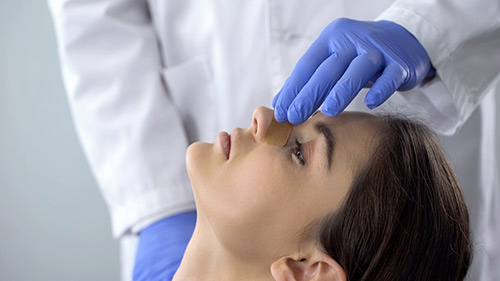
Rhinoplasty, colloquially known as a “nose job,” is a surgical procedure used to change the size, shape, or proportions of your nose. According to the American Society of Plastic Surgeons, surgeons perform almost 220,000 rhinoplasties every year, making them the most common facial plastic surgery procedure. While most people think of rhinoplasty in its cosmetic context, it goes way beyond that, serving to repair injuries, correct birth defects, and even aid breathing.
At The Yeung Institute in Houston, Texas, an American board-certified ENT specialist and facial plastic surgeon Dr. Cecil Ye
ung is known for his skill and perfectionism in every surgical procedure he does, and he’s also a leader in performing minimally invasive rhinoplasties. He firmly believes that rhinoplasty is much more than just a “nose job,” and he wants his patients to understand its great potential. Here’s what he has to say.
Why would you need a noncosmetic rhinoplasty?
While there’s no contesting rhinoplasty’s place in helping people achieve their aesthetic goals, there’s much more the procedure can do. Here are some areas where it proves its mettle.
Difficulty breathing
If you have difficulty breathing through your nose due to any form of nasal obstruction, a rhinoplasty may be in order to correct the problem. Nasal obstructions that interfere with normal breathing can lead to problems exercising and disturbed sleep that includes snoring and sleep apnea, the latter of which has serious implications for overall health.
If conservative medical treatments (e.g., nasal spray or positive airway pressure devices) fail to improve the problem, surgery may be warranted. Rhinoplasty performed because of medical reasons that are unresponsive to a minimum of six weeks of conservative medical treatment are often covered by health insurance.
Dr. Yeung tailors the procedure to the underlying problem. If polyps have formed in the nasal passages, he removes and corrects the underlying cause, opening the airway. If the septum –– the cartilage dividing the right and left nostrils –– is bent, a septoplasty that straightens the tissue may fix the problem. However, when the deviation is severe, or if it forms near certain important areas of nasal support, the doctor performs a rhinoplasty using strategically placed cartilage grafts to ensure proper nasal shape to aid breathing.
Cleft lip and palate
A cleft lip and palate is a birth defect that causes a split in the upper lip and soft palate of the mouth when the developing facial features don’t knit together completely. This leaves a gap or extreme depression in the upper lip and, sometimes, affects the nose as well. In those cases, rhinoplasty becomes an integral part of the overall treatment plan, reconstructing the features for both functional and cosmetic reasons.
Broken nose
A broken nose is a common injury. Rhinoplasty can return your nose to its normal position and shape, which are cosmetic concerns, but it also solves a few medical issues in the process.
A broken nose can lead to chronic breathing problems, and you may lose your sense of smell. Rhinoplasty opens the blocked airways and allows for proper drainage from the nose and sinuses.
Repair following brain surgery
Brain tumors, depending on their location, can be removed through the nose. It’s life-saving surgery, but it can also damage the inside of your nasal passages. Rhinoplasty repairs the damage and reconstructs the airways.
The rhinoplasty procedure and recovery
Because of Dr. Yeung’s dual specialties in ENT surgery and facial plastic surgery, he’s uniquely positioned to perform all aspects of rhinoplasty surgeries. If he’s performing an open rhinoplasty, he makes a small incision under the tip of your nose, allowing him to reshape the areas you want changed.
With closed rhinoplasty, Dr. Yeung makes all the incisions inside your nose, leaving no visible scars. You’re under anesthesia during both types of surgery, and the procedure can take 3-5 hours, depending on the complexity and the amount of work he needs to do.
Initial recovery takes about a week, during which time you may experience swelling and bruising in the nose and even under the eyes. It may be difficult to breathe through the nose during the first week, because the doctor places splints — flexible plastic sheets — inside the nose to ensure the septum remains straight. These will be removed a week after the surgery. You’ll be able to return to your normal activities about one week post-procedure.
If you’re unhappy with the shape or size of your nose, or if you’re having breathing difficulties because of structural problems, a rhinoplasty may be the best way to address your issues. Give The Yeung Institute a call at 713-795-4885 to set up a consultation with Dr. Yeung, or book online with us today. You have problems; we have solutions.

